Pacifier Weaning: Tips, Steps, & the Right Time to Start
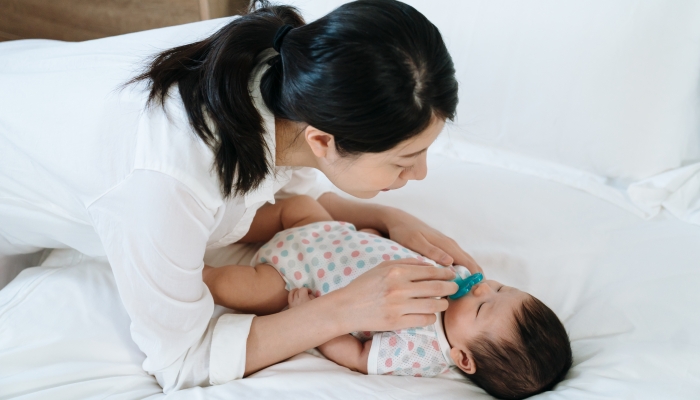
- One way to relieve the stress associated with pacifier weaning is by removing it gradually.
- Even with a gradual approach, it’s possible to successfully wean your child from the pacifier within a few weeks.
- If your child knows they’ll receive a special “big kid” item when they give up the paci, it will make the exchange easier.
As a parent, some of my most challenging stages have been when weaning a child. Weaning seems to be so difficult because you’re often removing something that brings comfort to your child. This causes tears for both parent and child.
Most parents will have to endure the pain of weaning a baby from breastfeeding or weaning a baby from unhealthy sleep habits using sleep training methods. If your child uses a pacifier, you may also have to do the hard work of pacifier weaning. Though it’s hard, it’s an important step to prevent the pacifier from causing damage.
However, there is good news. Weaning doesn’t have to be a painful process that leaves you feeling defeated. All you need is a solid plan and support.
Through all of the experiences I have had weaning, I have discovered the keys to making it more successful and less painful. I’ll guide you through pacifier weaning with pro tips so you feel confident.
You’ve got this! Let’s get started.
Risks of Prolonged Pacifier Use
We know your little one is pretty attached to that pacifier. Thinking about cutting it out cold turkey can be intimidating. However, there are risks to prolonged pacifier use that make the decision to take away the pacifier easier.
Increased Ear Infection Risk
For a baby between the ages of 0 to 6 months, the risk of ear infections is naturally very low. Unfortunately, this changes after 6 months. Children past 6 months who use pacifiers continually throughout the day have a higher risk of developing frequent ear infections.
In fact, a 2009 study published by the American Academy of Pediatrics, conducted by Marjo Niemelä, MD, Outi Pihakari, MB, Tytti Pokka, BSc, Marja Uhari, MSc, and Matti Uhari, MD confirmed these findings. This study, Pacifier as a Risk Factor for Acute Otitis Media, found that among the 484 children included in the study, children past 7 months of age who didn’t use pacifiers continually “had 33% fewer acute otitis media episodes than the children who did”.
Knowing how to sterilize pacifiers properly will also help reduce the bacteria your child obtains from pacifier use.
Might Cause Dental Issues
According to the American Academy of Pediatric Dentistry, when toddlers continue to use pacifiers past 18 months, they may increase their risk of tooth misalignment. This is commonly referred to as pacifier teeth. Pacifier teeth are caused by abnormal pressure in the mouth from the presence of a pacifier and can be avoided by removing a toddler’s pacifier early.
A few other dental issues many toddlers encounter as a result of prolonged pacifier use include:
- Speech impediment
- Overbite
- Deformities in the roof of the mouth
Choosing a pacifier that is orthodontist-approved will also help reduce this risk. The best pacifiers are ones that don’t cause abnormal pressure in the mouth and fit your baby’s mouth perfectly.
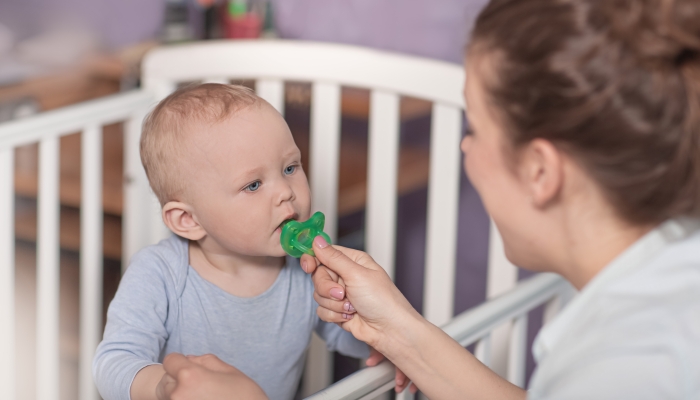
When to Start Weaning Your Child off the Pacifier
Some parents choose to wean their baby off a pacifier after 6 months. Others wait until their toddler approaches 2 years old. When you decide to wean your child is up to you.
However, keep in mind that the risks increase as your child grows. One simple thing you can do to reduce the risk of pacifier teeth or ear infections is to limit pacifier use to bedtime. If your toddler only uses the pacifier to fall asleep, it’s not likely that they’ll encounter long-term issues.
Pacifier Weaning: A Step-by-Step Guide
When it’s time to start the pacifier weaning process, it can feel a bit intimidating. This is why it’s important to have a step-by-step plan to stick to. Some parents choose to try the cold turkey route, but I have found this can lead to more frustration and emotional hardship than necessary.
A simple plan will give you the backbone needed to say “bye-bye binky”. Try these steps, instead of going cold turkey, for a smoother experience.
Decide When to Start
Some parents choose to wean from the binky around a child’s first birthday. This is often an important milestone for parents and it makes sense to transition them to “big girl” or “big boy” items instead. Other parents wait until closer to 2 years old so they can talk with their child about this transition.
Whatever age you decide on, the important thing is to stick to it. Yes, you and your child may both feel sad, but this will only be temporary. As a mom who has weaned many times, I can tell you that it’s worth the short-term hardships.
Include Your Child
Weaning babies from the pacifier will look different than weaning toddlers. For young babies, there might not be much conversation about the process. However, when weaning a toddler, you can talk to them about the change in order to help them prepare.
It’s helpful to tell your toddler about all the exciting changes they get to look forward to as they grow. If your child knows they’ll receive a special “big kid” item when they give up the paci, it will make the exchange easier. You can also tell them it’s okay to feel sad about giving up the binky.
For even more conversation help, look in your local library for children’s books about pacifier weaning. A story about another child giving up their pacifier will help your child cope and prepare.
Gradually Reduce Use
One way to relieve the stress associated with pacifier weaning is by removing it gradually. Many children will have a hard time if all the pacifiers disappear overnight using the cold turkey method. If instead, children wean off the paci gradually, there won’t be so much shock.
Bring in the Paci Fairy
This step is not a necessity, but it may be helpful when weaning a toddler from the binky. The pacifier fairy is a way of making binky removal something to look forward to. It’s a similar concept to the tooth fairy.
Parents who use this method tell their children that the binky fairy is coming on a certain date. When she comes, all the pacifiers are removed from the house and she leaves a prize in their place. Parents might choose to let their child know what the prize will be or leave it as a surprise.
A way to make this even more fun for the child is to have them collect all their pacifiers in a special bag or box. They can then put them under their pillow for the paci fairy to collect.
You can also use this method without the paci fairy being involved. Simply tell your child that soon it will be time to give up the pacifier, but they’ll receive a fun prize instead of the pacifiers. It’s also important to let them know that this is a big step that may be hard, but is part of getting older.
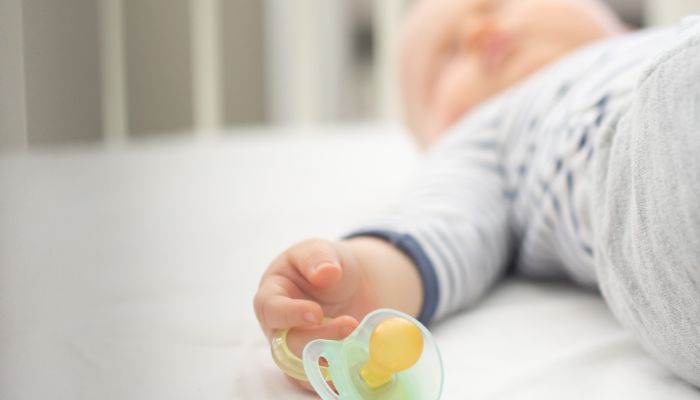
How Long Does It Take to Wean a Child From a Pacifier?
The time it takes to wean your child off the pacifier will depend on your child’s personality and your method. Parents who use the cold turkey method will see quick results, but it could be hard emotionally for all involved. However, even with a gradual approach, it’s possible to successfully wean your child from the pacifier within a few weeks.
Tips to Successfully Wean Your Child off the Pacifier
When it’s time to remove the pacifier, you’ll want to be ready and have strong support around you. There is no doubt that your baby will protest the weaning process. Stay strong and stick to your plan by using these tips:
- Enlist the support of parents who have done it before.
- Take a deep breath. Keep in mind that you’re not alone and that this is best for your child.
- Don’t start weaning when there are other changes going on in the household like the addition of a new baby, moving, starting daycare, etc.
FAQs
How many hours per day should a baby use a pacifier?
The more your child uses their pacifier during the day, their risk of developing pacifier teeth or ear infections increases. To limit risks, try only allowing your baby to use the pacifier for nap time and bedtime. You can allow more daytime use before the age of 6 months, as their ear infection risk is naturally lower.
What can you replace a pacifier with?
Finding a transition object to use after you remove all pacifiers doesn’t have to be difficult. You can use anything that will motivate your child. Think about what they really love and something that will motivate them to give up their pacifiers.
If you still need suggestions, try these fun ideas:
- A new toy car or doll
- Stuffed animal
- Tricycle
- Blocks
- New bed (This might work if you’re already about to transition to a “big kid” bed.)
How can you get a toddler to self-soothe without a pacifier?
One of the biggest concerns from parents about pacifier weaning is how to get their baby to sleep without a pacifier. If your child is used to falling asleep with a pacifier, you will likely have to change up the bedtime routine.
This might seem overwhelming, but there are several things you can do to help your fussy baby self-soothe without a pacifier. These include:
- Offer soothing alternatives like a stuffed animal or a special blanket.
- Use calming essential oils or quiet relaxing music to help your baby calm down.
- Try gentle sleep training to minimize crying or stress.
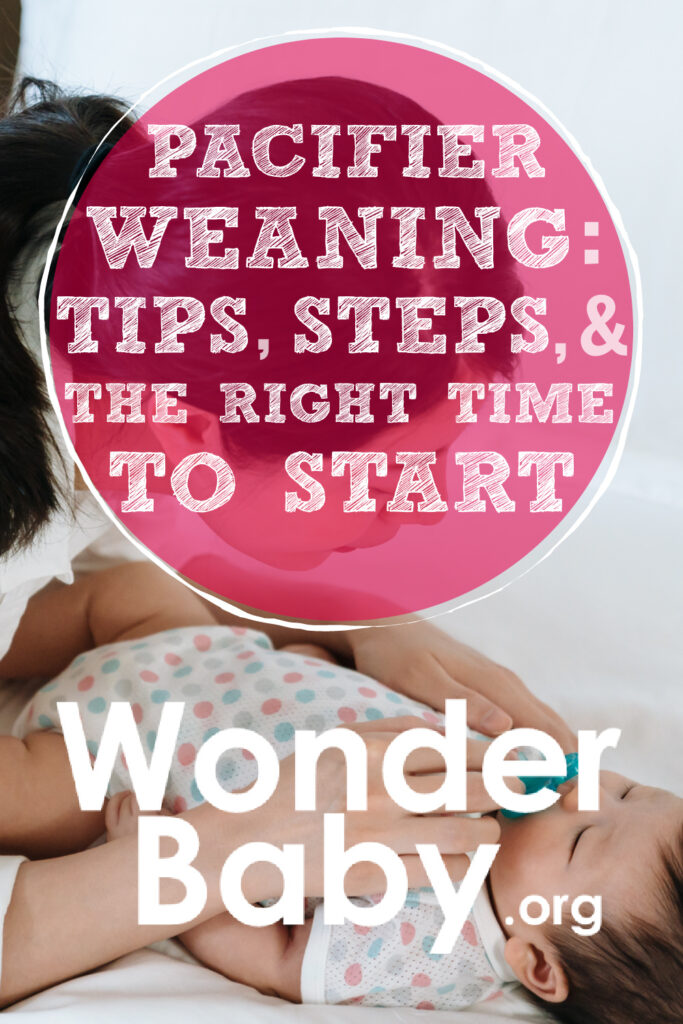
Related Posts
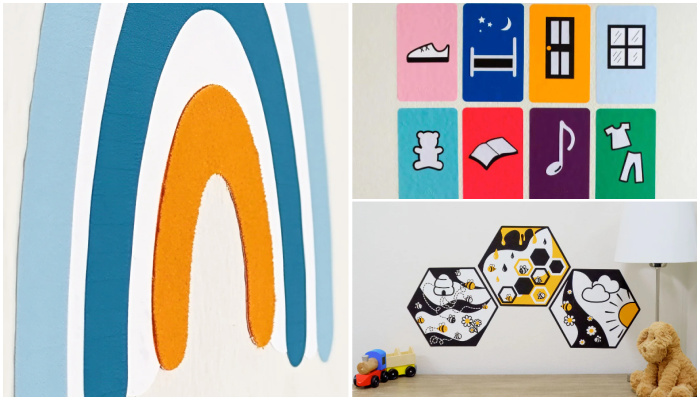
Parenting
Sensory Wall Art: 5 Tips to Create a Room Your Blind or Low-Vision Child Will Love
Even if your child can’t see their surroundings, personalizing and decorating their room with thoughtful, sensory-friendly design can make a big difference in their confidence, independence, and joy.
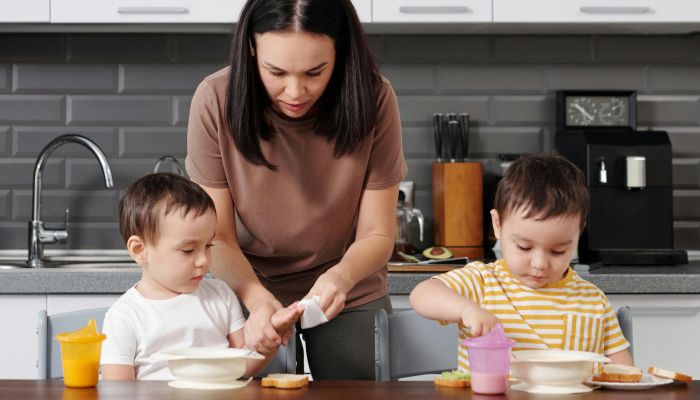
Parenting
4 Tips to Manage Twins Alone as a Single Parent
Taking care of twins alone as a single parent can feel overwhelming. Learn practical ways to help lighten the load.
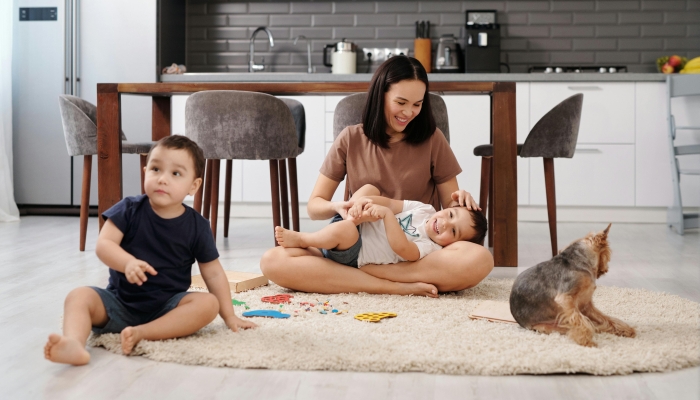
Parenting
How to Manage Twin Escalation Syndrome
Discover effective strategies for managing twin escalation syndrome, including promoting individuality and fostering positive interactions.